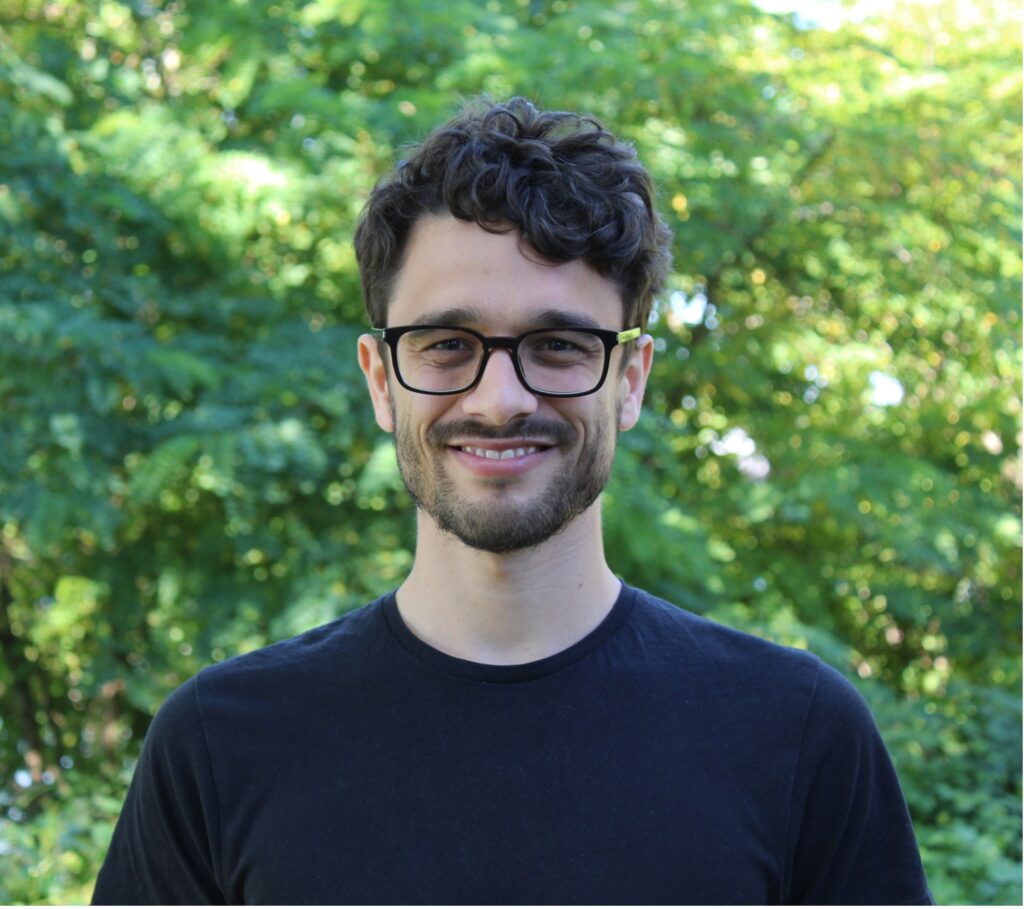This article forms the first in an intended series of articles. The main theme of that series is to reflect on a new language for social transformation. For me, language goes beyond words, concepts or metaphors. Essentially, it is the filter through which we look on life, perceive our environment and plan our actions. Changing our language, therefore, is a powerful way towards personal and collective transformation.
Every article of the series is dedicated to a specific theme or concept. Yet, rather than enriching your vocabulary, it is much more the shift in perspective underneath the concept that I want to contribute to. In our case, strange attractors are a concept from chaos theory. Exploring strange attractors are therefore a gateway into the world of chaos, dynamical systems and complexity. And what is a strange attractor?
Well… there is no simple answer. But I have an idea where to start.
To enable non-linear reading I visualised the article on kumu as a dynamical map:

The starting point
Life puzzles me. Partly my own. Even more so fundamental questions like how life emerged? Or human sense-making: how on earth is it even possible that we can communicate? I jot down these black & white symbols on a keyboard, they appear on a screen and you can understand what I am trying to say.
In a similar way: given the goodness and well-intendedness of many of us, how are we able to create phenomena like environmental destruction? What social and psychological principles are at play in our daily lives that enable outcomes we don’t want?
The reasons for asking myself these questions are twofold: I have a genuine curiosity to go to the bottom of things, wanting to understand the root causes rather than superficial appearances. Understanding for its own sake so to speak.
And then there is this undeniable desire to drive social change. I came here for a reason. Not to accept what is happening around me, but to play an active role in co-creating our future. This part of me is highly intentional, using knowledge to identify leverage points for personal and social transformation. More specifically, I am eager to learn and embody how I can contribute to meaningful change.
In the past years, those motivations (or better: driving forces) lead me down some rabbit holes, both in theory and practice.
Embarking on a journey into strange lands
Due to my fascination for social change, it is not such a surprise that I studied sociology. There, most approaches and (meta) theories are relatively systematic, with the ambition to explain and the tendency to categorise. It is difficult to speak about the diverse field of sociology in general terms. Yet what I often found was theories and methods that made sense of events once they happened. Categorising the past and projecting it into the future. And then making those events fit the theory. It reminded me of the story of the little prince, visiting the king on his planet*:

Little prince: “Sire–over what do you rule?”
King: “Over everything,” said the king, with magnificent simplicity.
[…] Little prince: “And the stars obey you?”
King: “Certainly they do,” the king said. “They obey instantly. I do not permit insubordination.”
Little prince: “I should like to see a sunset … Do me that kindness … Order the sun to set…”
King: “You shall have your sunset. I shall command it. But, according to my science of government, I shall wait until conditions are favorable.”
Little prince: “When will that be?” inquired the little prince.
King: “Hum! Hum!” replied the king; and before saying anything else he consulted a bulky almanac. “Hum! Hum! That will be about– about– that will be this evening about twenty minutes to eight. And you will see how well I am obeyed.”
I was curious to find out if there is more. My backpack filled with Weber & Elias, Luhmann & Habermas, Foucault & Bourdieu, Berger & Luckmann I expanded my search for answers; and wandered off into the strange lands of complexity science, chaos theory and fractal geometry. For me, those excursions have not only been fascinating from an academic perspective, but also insightful for my life as a social entrepreneur. I invite you to come with me and discover those strange lands. And I promise that I will guide you back at the end.
What’s the weather like over there?
Welcome in the world of complexity! As with most other foreign places, things work a bit differently here. Let’s start with a quick introduction first: As James Gleick in his groundbreaking book “Chaos. Making a new Science” put it:
“the act of playing the game has a way of changing the rules”
If you want it or not: as soon as we arrive at the shores, we are not merely passive visitors. We are active agents and influence what is happening here. A complex system, therefore, is dynamic and adaptable. It responds to its environment yet has its own “agenda”. The question, then, is what provides orientation for the behaviour of the system and the actors within it? The answer: Strange attractors!
Some of us may be familiar with pictures like those:

CC BY-SA 3.0.
It shows the so-called Lorenz attractor. It describes visually how a dynamical system behaves, in this particular case the flow of fluid under certain conditions. The attractor itself is “the whole thing”, the space that spans all potential behaviour. We can see that there are two central attractor points around which the system seems to rotate. The strange thing is that – despite having knowledge about all relevant parameters – it is impossible to predict how the system will evolve over time. This is called nonlinearity. Caused by those weirdly arranged attractors.
As an analogy, you can imagine the weather: Weather with all its components (temperature, air pressure, humidity etc.) is the system. If we measure those components and visualise them, we get our (visualised) attractor of the system; most likely indicating us certain central points. In most geographical locations, there are two main states, summer (dry season) or winter (rainy season). Let’s say “summer” is the attractor state on the left, “winter” on the right. Any day of the year constitutes a point. Usually, we know if it’s summer or winter, and how the next days will roughly be like. Yet any precise prediction beyond 10 days is almost impossible. And at some point, the system will shift. We know it will happen, yet we don’t know the exact day. No matter how much information we have at hand.
As our nerdy friends would say: The weather is a chaotical & nonlinear system. Its behaviour rotates around two central attractor states. This leads to the fact that the system is locally unstable yet globally stable. That’s quite strange, yes. But what does that have to do with social transformation?
To me it seems that societies, communities, families (put any social system you like here) rotate around certain states as well. Conservative or liberal, open or closed to “outsiders”, free markets or state-centred economies. Those systems experience periods of prolonged stability (economic growth with prosperity), followed by a rapid & sometimes unexplainable “switch” (the dotcom or housing bubble bursting). Looking with that lens on my environment has helped me a lot to understand social change. Order and chaos should not be seen
“as antagonistic and fixed states but rather as stages in a process of dynamic and transformational becoming”.
― Elisabeth Garnsey and James McGlade
The same accounts for any dynamical system with more than one equilibrium, more than one attractor state so to speak.
The dance between polarities
Butterflies have two wings. We have winter and summer (or rainy and dry season). There is life and there is death. Following those examples, polarities seem to unite stability and movement. In that sense, opposites are not really opposing each other. They create space for life to happen in between.
“The only way to make sense out of change is to plunge into it, move with it, and join the dance.”
― Alan Watts
We tend to care about what happens around us; and oftentimes have the desire to influence it in a certain way or direction. Joining in the dance does not mean to accept everything that happens. Rather, it means to understand that it is the underlying rhythm that moves us. To change the dance, we have to change the music (or the polarities in our case).
Taking the principle of nonlinearity into account, there are ways to make a certain behaviour (of a system) more likely, orientating it towards a (desired) attractor state. Yet, despite our best efforts, we can never know what will actually happen. Life is unpredictable. But life is not random either.
And we have a true super-power on our side. Social systems differ from the weather in one important aspect: the attractor states are social constructions. They are based on language and culture, on individual and collective agency. And what was constructed once by people can be changed. In other words: We have the capacity to create and establish new attractors.
The attractors of our time
“Grown-ups love figures… When you tell them you’ve made a new friend they never ask you any questions about essential matters. They never say to you “What does his voice sound like? What games does he love best? Does he collect butterflies? ” Instead they demand “How old is he? How much does he weigh? How much money does his father make? ” Only from these figures do they think they have learned anything about him.”
― Antoine de Saint-Exupéry, The Little Prince
Translated into a social context, we can see an attractor state as a shared set of beliefs and internalised symbols and habits. A fix point within a certain system like family or economy. The word “purpose” comes relatively close to it. Let’s examine what the current attractor states of our society are. For the sake of length and digestibility, we will keep it short, unscientific and subjective.
Western thought is highly influenced by the idea of a mechanical universe (Newton) and mind (Freud). It emphasises the difference between an individual and its environment, and the differences between people. The centre of this worldview, then, is the autonomous and isolated individual.
“I, a stranger and afraid
In a world I never made.”
― A.E. Housman, Last Poems
As we know, attractors stabilise behaviour. The attractors emerging out of this particular worldview are economic growth & meritocracy as well as the attempt to control our environment (which includes both our natural and social environment). It is a paradigm of competition, of “me/us against”. As a consequence, we usually only focus on one side of the polarity; the side that we prefer and desire. And we pathologize the other side. Economic growth is good, de-growth is bad. Being happy is desired, depression is something we have to treat with medication. It’s like wanting to breath in all the time, judging all the outbreaths.
Still, orienting our behaviour towards those states brought enormous prosperity (for some) and stability. We live in an era of unseen peace, economic wealth, scientific discovery and global interconnectedness. Yet something is off. It feels like our own inner attractors (our personal purpose, our desire for integration and wellbeing) pull us away from society’s inner attractors. The tricky thing is that both types of attractors – individual and collective – are usually invisible. Usually.
“And now here is my secret, a very simple secret: It is only with the heart that one can see rightly; what is essential is invisible to the eye.”
― Antoine de Saint-Exupéry, The Little Prince
From opposition to integration
We are still in the land of complexity, remember? We learned that here, attractors of a system are not seen as opposites. On summer follows winter, follows summer, follows winter. The system is healthy when it shifts between both states. This leaves us with the question:
What are healthy polarities for us as society?
Let’s look at an example that some of us (me for sure) struggle with: balancing working and resting / free time. An alternative way to phrase it could be: Creating something specific (for others) vs. taking care of yourself only. The current paradigm likes to phrase that as “work-life balance”, one of the most horrible terms I know. As if working would not be part of my life. The underlying polarity is “being productive vs. allowing yourself time to be unproductive”. In a more mechanistic view to drive the point home: running the machine vs. oiling the machine. (with the addition that even “unproductive” time is often turned into a product – like consuming advertisement).

That’s not a healthy attractor to me. And I see myself falling into this polarity if I am not careful and attentive. An alternative way of phrasing it would be: I am enjoying my time either creating something meaningful for other people (a.k.a. working) or I enjoy to just do things for their own sake. In this way, the mechanistic attractor (work vs. life) is replaced by a more wholesome attractor (meaningful and intentional action & enjoying things simply for themselves). It’s still two polarities, yet they don’t oppose each other.
In a similar fashion, we can look at our climate crisis. We live on the expense of our environment. And this challenge cannot be solved with simplistic regulations or public claims that keep the idea of economic growth alive. No, the paradigm of economic growth is not compatible with environmental survival. It does not work to simply include nature into this growth-logic (calling it sth. like green technology). We need new polarities, new attractor states to address this challenge. An economic attractor that allows certain elements to be outside of the linear growth logic. What this could be I leave up for your imagination.
Sounds idealistic? Well, I would call it pragmatic imagination. As all we see around us was an image in our heads first, then turned into “reality”. One invitation I see here is to move away from a paradigm of needing to know and control, rather framing the attractor around a central question. How can we integrate work and free-time into a fulfilling life? How can we assure both our material wellbeing and the wellbeing of the nature that surrounds us? It’s OK to not have the answers (attractor states) yet. But we can (re)frame the attractor around them.
In this, the world desperately needs individuals who are capable of transcending the worldview of opposites, black and white, gain and loss, good and bad. A world of scarcity and competition. Not just conceptually, but with our actual behaviour and actions.
“We but mirror the world. All the tendencies present in the outer world are to be found in the world of our body. If we could change ourselves, the tendencies in the world would also change. We need not wait to see what others do.”
― Mahatma Gandhi
Strange attractors of this world, unite!
Are you seeking to create a future for yourself and others that is different from the present? As an activist, social entrepreneur, philanthropist, parent, consumer …? Then I would consider you as a change agent, or strange attractor. Somebody who inspires and motivates themselves and others to act on a worthy ideal. A strange attractor in that sense can be any individual, but also an idea, a startup or a movement we represent.
We may be far out in the old paradigm, and it is frustrating from time to time. But we can constitute the centre points in the new paradigm. We are the ones to create new attractor states for our common future.
So how can we do that?
I see two crucial steps to make this happen. And you may have guessed already: Number one is to be the strange attractor yourself. Be the space and inspiration for others. Embody a new path for action. Number two is to team up and create (new) social systems jointly. Both steps are courageous and bold. And here is why:
Embodiment is not only an intellectual exercise. Here I speak out of tough personal experience: Stating that I want to achieve something (e.g. to be a humble and inspiring leader) often created distance. Rather than motivating me, it made me (subconsciously) believe that I am not there yet. Doing the inner work is required. Knowing and accepting ourselves. Embracing our inner beauty, shadows and power. And there are no quick fixes or shortcuts.
Teaming up is even more delicate. It requires us to find each other, create thriving teams, organisations and networks. In short: institutionalise new attractors. Probably this will cause opposition. From others and from within. As it requires us to let go of our individual dreams to form collective ones.
My answer to that is: yes, that’s quite a task, but what else should we do? What else are we here for?
Jannik Kaiser is co-founder of Unity Effect, where he is leading the area of Systemic Impact. His desire to co-create systemic social change led him down the rabbit holes of complexity science, human sense-making (e.g. phenomenology), asking big questions (just ask “why” often enough…) and personal healing. Having worked in the NGO sector, academia and now social entrepreneurship
Originally published at UnityEffect.net
Related Posts
September 24, 2025
Thank you & Farewell
November 4, 2024




